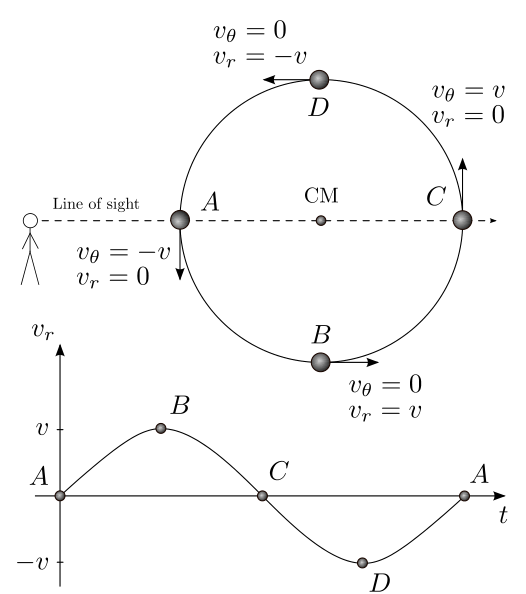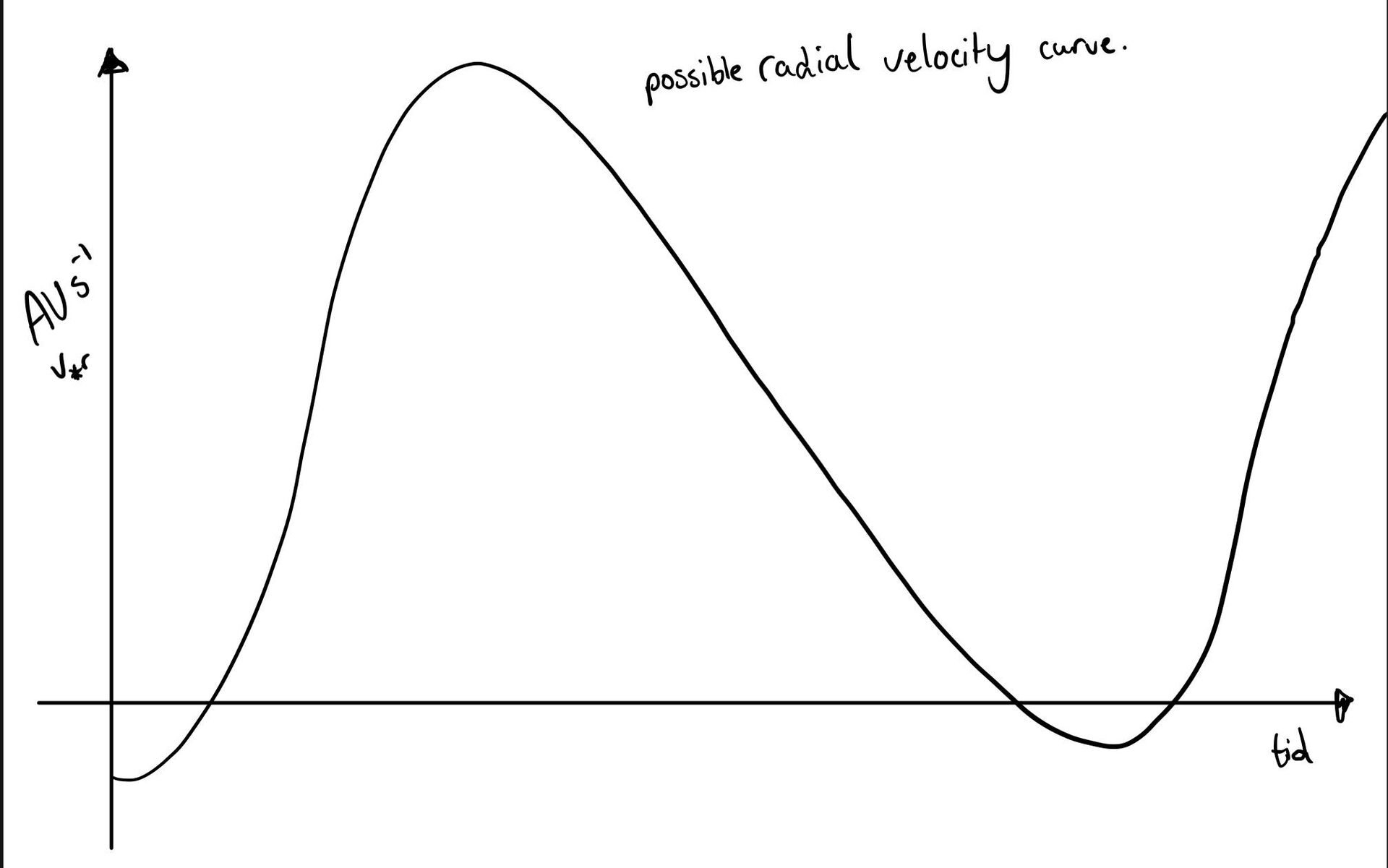
The storm is coming for me. I will try to write this as fast as possible, stay with me. The topic today is radial velocities, it's not that complicated or anything.
Observation has always been important to us who are interested in astrophysics, since we can't really make experiments here, we just kinda sit there .. watch stuff happen.
One of the most important observations is the radial velocity \(v_{*r}\), it can help tell us so much about a star for example, it can help us find mass, density and the radius.
We'll kick this theoretical part with a figure made by Sire Alfrodius

This is how we observe exoplanets and stars, we have a line of sight, a straight line from the point of observation to the center of mass. We also usually observe orbits that are usually tilted a specific angle i, being the angle between the line of sight and a line made by the normal of the elliptical orbit (the plane). Now put yourself in the position of this person who's looking, would you be able to observe the velocity exactly? Would you see one component and not the other? If you think that we only see one component you are correct.
The reason for this is that we can only measure the velocities of planets using the Doppler effect which is extremely accurate, in short: the doppler effect means there is a change in the wavelength When the star is approaching, we observe light with shorter wavelength, the light is blueshifted but when the star is moving away, the light is redshifted. We measure that exact change and end up getting a very accurate value for radial velocity. Regardless, the only velocity component we get is the one that is paralell to our line of sight, the other velocity component which we call tangential velocity, can not be measured.
Also note that using simple trigonometry we obtain the following relation at points where the only velocity component is their radial component or in other words, when the planet's velocity is directed right or left, and there is no up or down.
\(v_r = v \sin i\)
In the special case where the orbit is circular and with inclination \(i=90 ^{\circ} \) we have the following

What the heck is that graph doing there? Well I'll tell you, but first let's look at that orbit. If you understood the paragraph above the expression for radial velocity, this should make sense, for example at point C where there is only velocity directed up we have tangential velocity being the only component therefore being the velocity.
Let's go from A to B and see what happens to the radial velocity. At A we have just velocity aimed down so radial velocity is 0, but as we move from A to B we slowly have more and more right-hand oriented velocity and less and less down directed velocity, until a point where we only have right-hand side velocity, which also happens to move away from the observer making it a positive value, so this is the maximum value. Similarly we can look at B to C and C to D (Try it!), then the graph makes sense, because at B we have maximum values and at D we have minimum value.
One more thing, we have to subtract peculiar velocity from the velocity we observe. Peculiar velocity is the velocity of the center of mass, so to find velocity in the frame of the center of mass we have to subtract away the velocity this way.
FUTUO! My simulator seems to not work, the electromagnetic radiation got a hold of it, it just won't work, I will just draw a sketch of how it's supposed to look like with peculiar velocity 220 kilometers per second, inclination angle 63.

The radial velocity graph can come in many shapes on forms depending on a multitude of factors such as mass, eccentricity and more. All radial velocity graphs have one thing in common, which is that they are periodic, meaning they repeat the same shape. To be honest with you, this sketch might be completely different from what is actually the case. I have to go, I don't have time.
I have so much more to tell you.